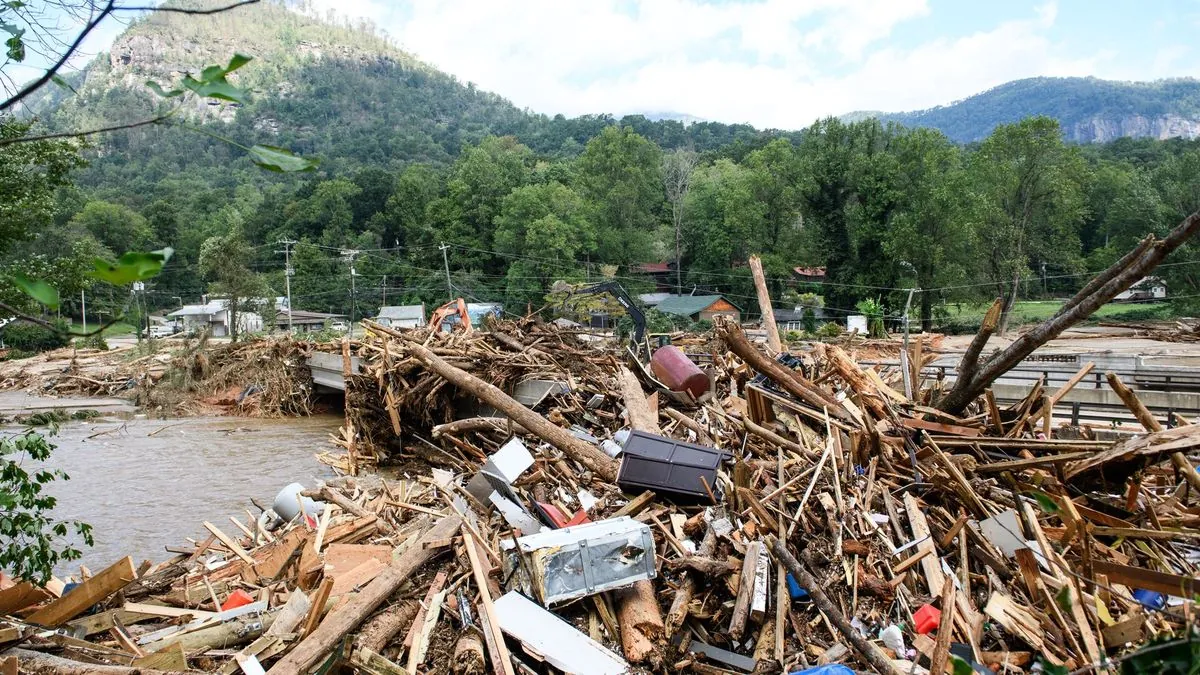In the aftermath of Hurricane Helene, residents of western North Carolina's mountainous regions are facing severe challenges. The storm, which struck the area approximately three days ago, has left communities struggling with basic necessities. People are queuing for water and food supplies, searching for cellular signals, and resorting to creek water for sanitation purposes.
Emergency response teams are working tirelessly to address the crisis. Their efforts focus on clearing blocked roads, restoring power and communication services, and reaching isolated individuals. The storm's impact has been devastating, with at least 133 fatalities reported across the Southeast, a number that is expected to increase.
President Joe Biden is scheduled to assess the damage firsthand on October 2, 2024. This visit comes as the region grapples with the consequences of an unprecedented weather event.
The scale of the rainfall is staggering. In the past week, Hurricane Helene and a preceding rainstorm inundated the Southeast with over 40 trillion gallons of water. To put this in perspective, this volume could fill 60 million Olympic-sized swimming pools or cover the entire state of North Carolina in 3.5 feet of water.
Ed Clark, director of NOAA's National Water Center, expressed astonishment at the event's magnitude:
"That's an astronomical amount of precipitation. I have not seen something in my 25 years of working at the weather service that is this geographically large of an extent and the sheer volume of water that fell from the sky."
This extraordinary weather event has highlighted North Carolina's vulnerability to tropical systems. The state, with its 300-mile coastline, typically experiences 1-2 hurricanes or tropical storms annually. However, Helene's impact has been far beyond the norm, affecting not just the coastal areas but also the state's diverse geographic regions, including the Piedmont and mountain areas.
North Carolina, known as the "Tar Heel State," has a rich history and diverse landscape. It was one of the original 13 colonies and the first to vote for independence from Great Britain in 1776. The state is home to significant landmarks such as the Great Smoky Mountains National Park and the site of the Wright brothers' first successful flight in Kitty Hawk.
As recovery efforts continue, the resilience of North Carolina's residents is being tested. The state, which leads the nation in sweet potato production and is the third-largest producer of hogs, now faces significant agricultural challenges. The extensive highway network, spanning over 4,000 miles, has been severely impacted, hampering relief efforts and economic activities.
The aftermath of Hurricane Helene serves as a stark reminder of the increasing intensity of weather events and their potential impact on communities. As North Carolina begins its long road to recovery, the eyes of the nation are on this resilient state, known for its motto "Esse Quam Videri" - "To be, rather than to seem."
